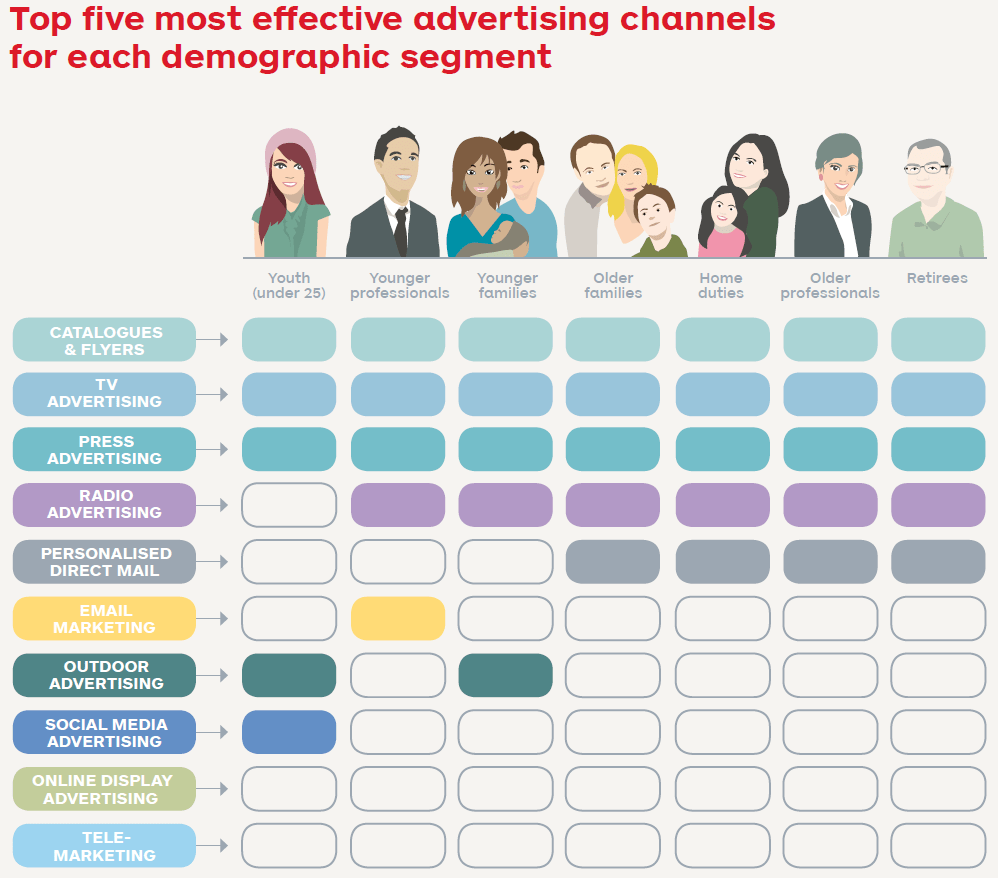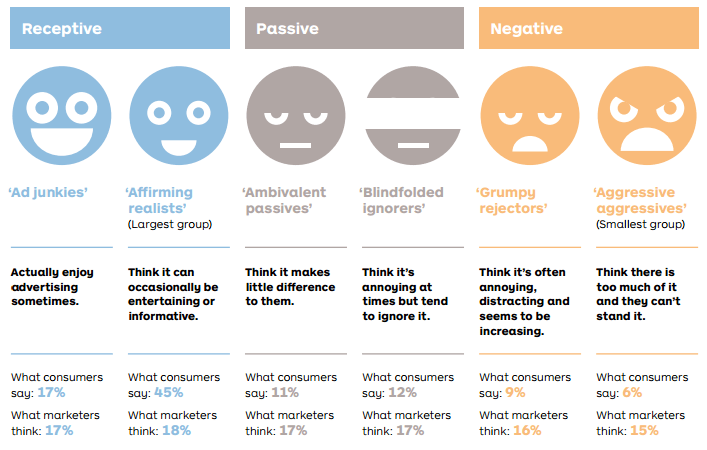The most effective channels for Australian customers
The fast adoption of digital communication further fragmented the marketing spectrum, adding new opportunities but also many challenges. Today, it is more important than ever for companies to maintain up-to-date information of customers’ communication channels preferences in order to derive the most return and value from their marketing efforts. Moreover, this critical data can benefit both sides of the marketing equation, creating more consumer-relevant communication efforts and lowering the overall marketing costs for businesses. It was exactly this idea that moved Australia Post to partner with the ADMA in commissioning a study “Creating connections that matter: How Australians want to hear from brands”.
The study, run by an independent research company, Quality Online Research, was based on a sample of 9,641 Australians nationally and conducted online in July 2013. It investigated how useful people found various communication channels across 45 different real-life scenarios. These scenarios addressed aspects of product evaluation, purchase decision making, customer retention, switching, cross-selling, loyalty, and rewards communications in ten key industry sectors. More broadly, key questions about the state of advertising, communication channel effectiveness and influence on purchase behaviour are answered comprehensively throughout the study.
Key findings
Key research findings confirm that the Australian advertising market changed significantly in the past 13 years. Over this period, the number of internet users grew exponentially from 7.6m to 24.3m in the Oceania region. At the same time, the study identifies gaps and opportunities in marketers’ current channel mix which, when looking to target sophisticated audience segments, can help optimise marketing spend in the channels most preferred for a particular target segment.
DM was reported as the fifth most effective communication medium among all demographics in the survey results. Catalogues topped the ranking with 62% of respondents identifying these as the most effective advertising medium, followed by TV advertising (52%), press advertising (40%), radio advertising (32%) and personalised direct mail (29%).
Contrary to the perception of digital media in developed market segments, email marketing scored only 25%, being the most effective digital channel according to the respondents. However, media spend patterns by advertisers do not reflect customer channel preferences as three of five most effective channel categories – including catalogues and flyers, press advertising and personalised direct mail – saw a decrease in spend between 2011 and 2013 (4%, 10% and 26% respectively).
When we look at how digital media ranked in the survey, the difference in perception across the demographics was significant – younger demographics rank social media advertising, online display advertising and email marketing more effective than older demographics do, but still far from as effective as catalogues and flyers, TV advertising, press, radio and direct mail as advertising channels.
Personalised direct mail and email
 The study describes in detail the attributes respondents associate with ten channel categories, this article will focus on analysing personalised direct mail and email marketing as they are often viewed as similar and interchangeable. Personalised direct mail, similarly to email, has two of the top three characteristics of the advertising channel that consumers rank as most effective: catalogues and flyers. These items are tangible and easy to take with you, show to others or file, plus direct mail can also be personalised.
The study describes in detail the attributes respondents associate with ten channel categories, this article will focus on analysing personalised direct mail and email marketing as they are often viewed as similar and interchangeable. Personalised direct mail, similarly to email, has two of the top three characteristics of the advertising channel that consumers rank as most effective: catalogues and flyers. These items are tangible and easy to take with you, show to others or file, plus direct mail can also be personalised.Regarding email, one of the advantages of the channel is that recipients are already online, so a website offering additional information is just a click away. This channel also ranks well with both younger and older professionals, two segments who will likely be regular users of email in the workplace. Interestingly, survey results showed that personalised direct mail is perceived trustworthy by 22% of youths (vs. 15% average across all demographics) and email was seen as most effective by retirees who thought it was often interesting and informative. Overall, men were more likely than women to say that these two channels are trustworthy and believable.
Channel effectiveness
The table summarises the findings by showing the top five most effective channels for each demographic segment. While catalogues and flyers, TV advertising and press advertising are considered the most effective advertising channels by all segments, a one-size-fits-all approach does not apply. As we move beyond people’s top three channel preferences, there are variations that can help marketers to create a multichannel mix to target key audiences more effectively. The table also highlights the disparity between the top-performing and low-performing channels, according to consumers. Note that email as well as social media advertising appear only with one demographic category (younger professionals and youth, respectively).
Paths to purchase

Paths to successful purchases can be extremely complex and difficult to capture in their entirety. The graph below shows how useful specific communication channels are to Australians at different points in the purchasing cycle. The survey by Quality Online Research asked Australians to take three major categories into consideration: new customer, existing customer and switching customers. The results show that the channel marked as preferred depends on the category; however, personal direct mail was in the top four choices across all the categories.
Summary
The results of this consumer study show that Australians continue to be receptive to advertising messages. Six out of ten generally feel positive towards advertising, preferring entertaining, informative, relevant advertising messages. Advertisers must innovate in an increasingly complex world in order to capture people’s attention and engage with them.
All demographics consider catalogues and flyers, TV advertising, press advertising, radio advertising and direct mail to be effective advertising channels which influence their purchase decisions. Clearly, a multi-channel mix is essential, but in many cases a revised media spend analysis from marketers may be necessary as the customers’ preferences shift.
This article was originally published in IPC Market Flash, issue 476.
Visit Australia Post direct marketing directory to access the full report - click here.
